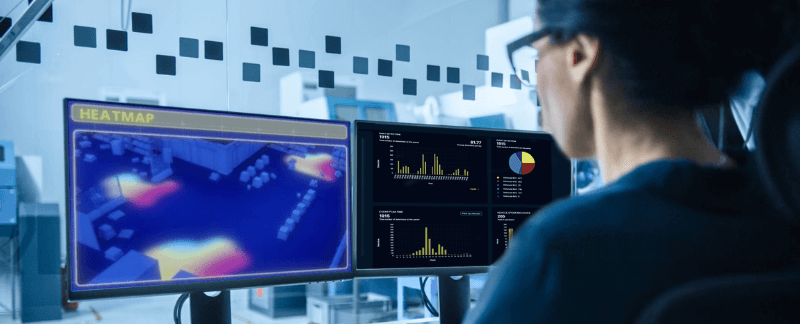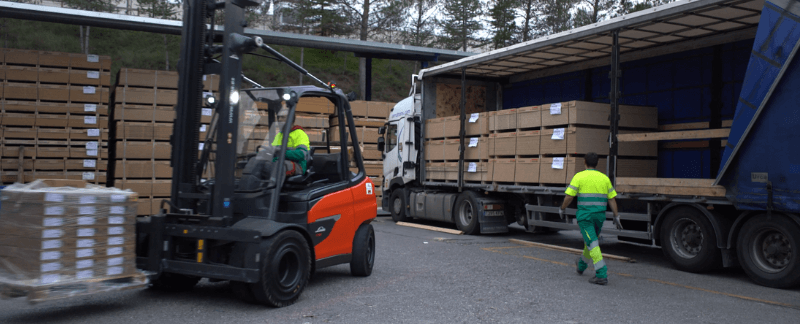AI-Powered Telematics and Fleet Management Solutions
In today’s data-driven world, telematics plays a critical role in how fleets operate, monitor, and optimize performance. But as fleets grow and data streams multiply, extracting meaningful insights becomes increasingly complex. That’s where artificial intelligence (AI) steps in—turning raw data into actionable intelligence that enhances safety, efficiency, and decision-making.
This article explores how AI is revolutionizing telematics and fleet management by transforming data into real-time, predictive insights that drive smarter operations.
Understanding Telematics and Fleet Management
Telematics refers to the integrated use of telecommunications and informatics to monitor and manage vehicles and equipment. It enables fleet managers to collect and analyze real-time data from GPS, onboard diagnostics, sensors, and driver behavior systems.
In modern fleet operations, especially in industries like logistics, construction, and mining, telematics is no longer optional. It is essential for real-time monitoring, remote diagnostics, route optimization, safety compliance, and more.
As industrial fleets become more connected, the volume of telematics data generated is exploding. According to Berg Insight, the number of active fleet management systems deployed in commercial vehicle fleets in North America was 17.4 million units in Q4-2023. This number is expected to reach 30.5 million by 2028. This trend is mirrored globally, as companies in construction, logistics, and heavy industry invest in smart fleet solutions to reduce costs, comply with safety regulations, and improve efficiency.
Challenges in Traditional Fleet Management
Data Overload and Lack of Insight
Traditional telematics systems collect vast amounts of data, from engine hours to vehicle location and fuel consumption. However, without intelligent processing, this raw data often remains underutilized. Fleet managers struggle to translate gigabytes of information into clear, actionable decisions.
Manual interpretation is time-consuming and error-prone, making it hard to detect patterns or emerging issues in real time.
Limited Predictive Capabilities
Most conventional systems operate reactively. They can show what happened but not what will happen. For instance, a system might alert when a fault code appears, but not when a component is trending toward failure.
This lack of foresight leads to unplanned downtime, costly repairs, and missed operational targets. Without predictive analytics, organizations are left guessing when to schedule maintenance or how to prevent failures.
Safety and Compliance Pressures
Industries with mobile machinery face intense regulatory scrutiny. From OSHA standards in the U.S. to EU-OSHA regulations in Europe, fleets must demonstrate safety protocols, track incidents, and prevent accidents.
Yet many accidents involving industrial vehicles result from blind spots, poor maintenance, or human error—factors that traditional telematics alone can’t fully address.
How AI Enhances Telematics and Fleet Management
Real-Time Data Interpretation
AI-powered systems can automatically sort, filter, and prioritize telematics data. Algorithms flag anomalies, detect emerging patterns, and trigger alerts before issues escalate.
For example, dashboards enhanced with AI can instantly identify critical KPIs like unsafe driving behavior, excessive idling, or potential mechanical faults. These insights empower managers to act immediately—reducing delays, fuel waste, and safety risks.

Predictive Maintenance & Risk Forecasting
Machine learning models trained on historical data can predict mechanical failures before they occur. By analyzing trends in vibration data, engine performance, or brake wear, AI enables precise, data-driven maintenance decisions.
This minimizes unplanned downtime, lowers repair costs, and extends the lifespan of expensive equipment. In harsh environments like quarries or logistics hubs, where every minute of downtime is costly, predictive maintenance can deliver a significant ROI.
Pedestrian Detection for Safety Compliance
One of the most powerful applications of AI in fleet safety is pedestrian detection. Blaxtair, for example, integrates AI cameras with telematics platforms to detect human presence in real time.
Mounted on forklifts, loaders, or excavators, these AI-powered systems can differentiate between a person and an object—alerting operators only when there is a real risk of collision. This reduces false alarms and boosts operator trust.
Combined with telematics, these alerts can be logged, analyzed, and used to enhance safety strategies across multiple sites.

Industry Applications and Success Cases
AI-enhanced telematics is transforming operations across a variety of sectors:
- Construction: Companies are using AI to track machine usage, prevent breakdowns, and ensure compliance on job sites.
- Logistics: Fleet operators reduce delivery delays and optimize driver behavior through AI-based routing and fuel management.
- Mining and Quarries: Harsh environments benefit from predictive maintenance and AI-assisted incident detection.
- Manufacturing and Warehousing: Forklifts equipped with AI pedestrian detection improve indoor safety and operational efficiency.
Case Study: On several industrial sites where Blaxtair was combined with an IoT solution, real-world observations showed that the risk of accidents was reduced by a factor of 3. This significant improvement is attributed to upstream detection of risky behavior and real-time alerts that allow operators and site managers to take immediate action. By bridging pedestrian detection with connected analytics, Blaxtair helps create a safer work environment even before a near-miss occurs.
Regulatory Considerations and Data Compliance
As with all data-intensive systems, AI in telematics must comply with stringent privacy and data protection standards. In the U.S., the California Consumer Privacy Act (CCPA) imposes transparency obligations. In Europe, the General Data Protection Regulation (GDPR) mandates strict controls over personal data use.
Fleet management systems must ensure:
- Data anonymization: Especially in employee monitoring contexts.
- Consent management: For tracking driver behavior.
- Transparency and fairness: In how AI algorithms make decisions.
Additionally, industrial fleet operators must stay aligned with safety regulations such as OSHA’s 1910.178 for powered industrial trucks, or EU-OSHA recommendations for vehicle-pedestrian interactions on worksites.
Future Trends in Smart Fleet Technologies
The evolution of AI in telematics is just beginning. Key emerging trends include:
- AI-powered camera integration: Cameras like Blaxtair’s are increasingly integrated with vehicle systems to enhance real-time awareness and data collection.
- Autonomous fleet management: Self-learning systems will soon make real-time decisions on routing, safety interventions, and maintenance scheduling—without human input.
- Fleet-as-a-Service (FaaS): The shift toward outsourced fleet ownership will increase demand for embedded AI systems to ensure maximum uptime and compliance.
As AI algorithms mature, they will be capable of recognizing nuanced behavior, forecasting not just mechanical failures but also human risks and environmental hazards.
Conclusions
AI is no longer an emerging technology in fleet management—it is fast becoming the standard. From real-time data interpretation to predictive maintenance and advanced safety features like pedestrian detection, AI transforms how fleets operate.
By combining solutions like Blaxtair’s AI-powered cameras with telematics platforms, businesses can meet compliance goals, protect workers, and optimize performance at scale.
Want to bring AI-driven safety and insight to your fleet?
Discover how Blaxtair can help you reduce risks and improve fleet performance.

